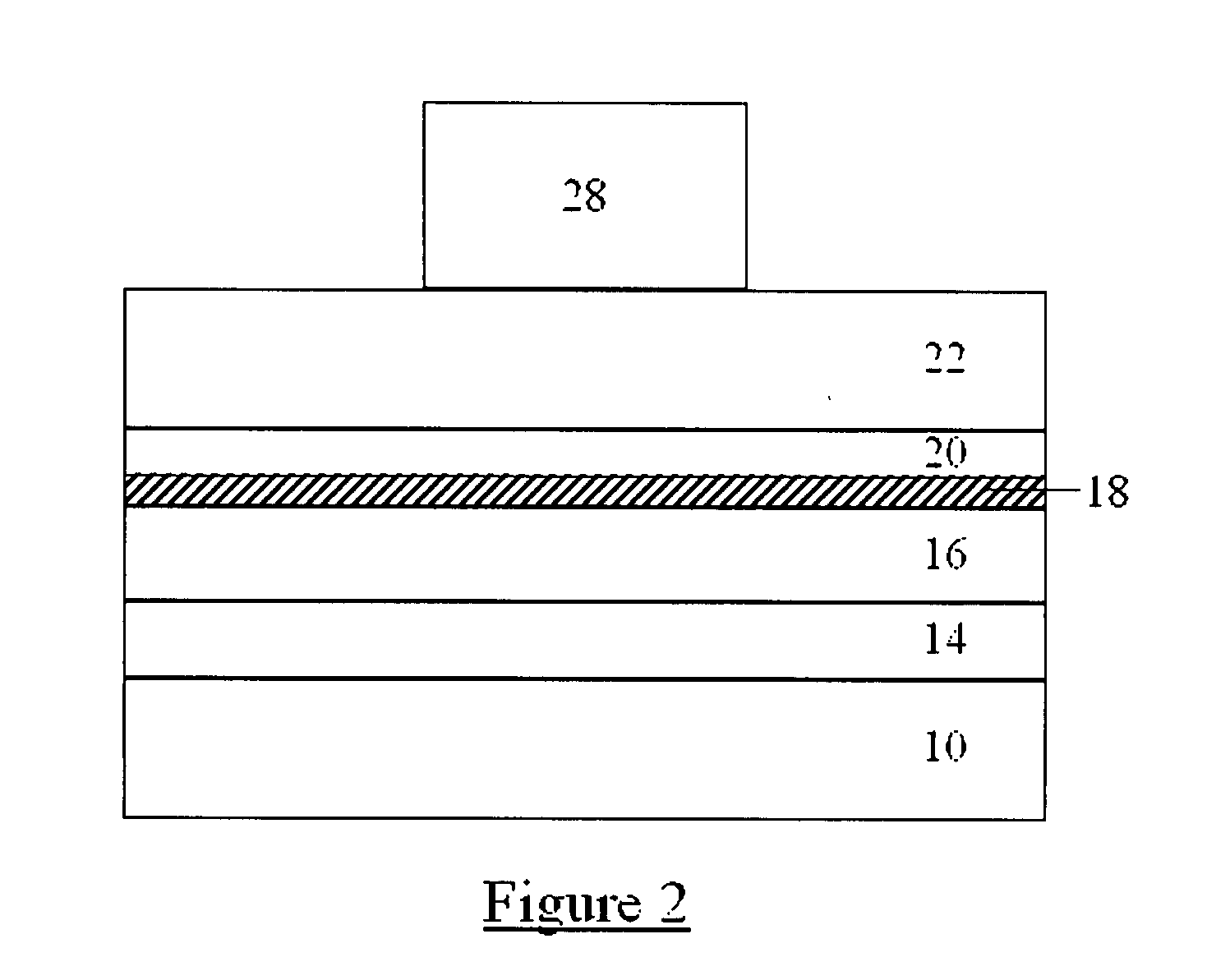Dry etch stop process for eliminating electrical shorting in MRAM device structures
- Summary
- Abstract
- Description
- Claims
- Application Information
AI Technical Summary
Benefits of technology
Problems solved by technology
Method used
Image
Examples
Embodiment Construction
[0027] The present invention is based, in part, on the development of a patterning method for fabricating magnetic tunnel junction (MTJ) devices that are employed in magnetic random access memory (MRAM) devices. As further described herein, a critical aspect of the invention is that MTJ devices prepared by the inventive process afford superior electrical isolation between the magnet layers in contact with the dielectric tunnel layer in comparison to the current art.
[0028] A typical MRAM structure, within which an MTJ is contained, is shown in FIG. 1. The MRAM structure is a complex stack of magnetic, conductive, and insulating films on a substrate. In FIG. 1, the specific components of a typical MRAM structure are shown and consist of a substrate 10, a barrier layer 12, a bottom contact layer 14, a mulitlayer fixed magnet structure 16 consisting of layers of CoFe, Ru, NiFe, IrMn, PtMn, and the like, a dielectric tunnel layer such as alumina or MgO 18, a switchable magnet layer 20 (...
PUM
 Login to View More
Login to View More Abstract
Description
Claims
Application Information
 Login to View More
Login to View More - Generate Ideas
- Intellectual Property
- Life Sciences
- Materials
- Tech Scout
- Unparalleled Data Quality
- Higher Quality Content
- 60% Fewer Hallucinations
Browse by: Latest US Patents, China's latest patents, Technical Efficacy Thesaurus, Application Domain, Technology Topic, Popular Technical Reports.
© 2025 PatSnap. All rights reserved.Legal|Privacy policy|Modern Slavery Act Transparency Statement|Sitemap|About US| Contact US: help@patsnap.com



